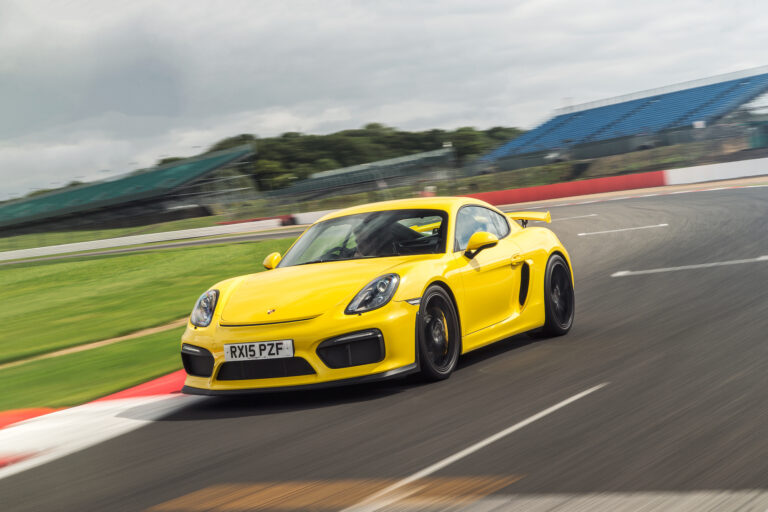 By Lee Sibley
3 years ago
By Lee Sibley
3 years ago
7 rules for buying a Porsche 997.1
The Porsche 997.1 is a performance bargain: before you buy, Paragon's Mark Sumpter reveals what you need to check…
Right now, there are two deal-clinching reasons why you should buy the first-generation Porsche 997 911. First, naturally, because it’s brilliant. But second, because it’s also currently an outrageous bargain. Early cars cost from £25k or less; gems are yours from upwards of £30k. Dive in, as they won’t be this affordable forever. Just be sure to check these seven things before you seal the deal, with top advice given by Paragon Porsche’s Mark Sumpter:
1. Provenance
The experts always start with provenance. Mark is exhaustive here: an HPI check should only be your starting point. Go through the service history paperwork (the best cars will have mounds of it) with a fine tooth comb, looking for signs of thorough care and attention, not penny-pinching. Mark in particular looks for recognised dealer stamps… and makes sure the right maintenance has been carried out at the correct dates and mileage intervals. Don’t just glance at the numbers – make sure you’re not overlooking, say, a 30-month period with no servicing that’s hidden in plain sight. A well-looked after car should cost you less to maintain than a badly cared-for example, and paperwork will be your biggest indicator.
Categories
2. Check the body numbers
“Check the chassis number, the VIN plates, and the chassis stickers,” says Mark. “There is an identification sticker in the driver’s side door shut, while the chassis number is on a plaque at the bottom of the windscreen. The chassis plate is on the driver’s side scuttle, beneath the plastic tray next to the battery cover. It’s fairly easy to get to… and it’s relatively easy to see if it has been tampered with. The only 997 I have ever seen with a bonnet identification sticker (as per 996s) was an early 2004/54 car. From 2005, they seemed to stop doing them – shame, as it was a good way of seeing if a car had a replacement bonnet.”
3. Check for accident damage
This one involves a bit of work, but it’s worth it. Mark advises to remove all the boot carpets and foam tool compartment, and look for evidence of accident repair. You can do this in the engine bay too, by looking at all the spot welds and seam sealer for evidence of replaced rear quarters or rear-end damage. Glance at the door shuts for evidence of repair and repainting – and of course, check over the bodywork with a keen eye. “Remember, the bodywork needs to be cleaned beforehand,” he says.
4. Download the ECU data
Wannabe super-sleuths will love this. It allows you to analyse the rev ranges in manual cars (if someone’s ever over-revved it with a mis-shift, you’ll be able to tell…), analyse the running hours, check the mileage corresponds with the speedo reading, and see if there are any recorded faults in the ECU memory. This service comes as part of a 9WERKS independent inspection – get in touch with us via hello@9werks.co.uk for more details.
5. Mechanical checks
The dreaded bore scoring isn’t the drama some on forums would have you believe, but still needs to be checked. Tips include listening for a ticking noise at idle, seeing particularly black engine oil (mind you, even in general, this is never ideal) and for the left exhaust tailpipe to be ‘sootier’ than the other. Mark also advises to get on your hands and knees to check for corrosion on the water pipes, exhaust boxes, tandem pump, suspension arms and brake discs. Look out for oil leaks and split coil packs too.
6. Interior check
“The interior often gives you a good idea of how the previous owners have treated the car,” says Mark. “Look at the condition of the trim, the state of the steering wheel and so on. If they’re beaten up, what might the rest of the car be like?” Operate all the electrical items – don’t just wind down one window, but both of them, and operate the sunroof, and the audio system, the sat nav, the heated seats, the electric door mirrors. Cycle through all the heater settings too – and try to make sure the air con works correctly.
7. Road test the car
This is the most fun of our seven checks, but don’t get overexcited just yet. You need to concentrate and stay alert, assessing the performance of the engine and gearbox, clutch and flywheel. “Heavy clutches, notchy clutches and juddering flywheels are all no-nos.” Judge how the steering feels under acceleration and braking, listen for suspension clonks and knocks, and generally aim to get a feel for how it handles. It should be beautifully flowing and fluid. If it isn’t, something’s up. Do what Mark would do, and walk away.
Search for your dream Porsche on the 9WERKS Classifieds, with over 50 cars supplied only by the UK’s most reputable dealers.
Written by Richard Aucock























